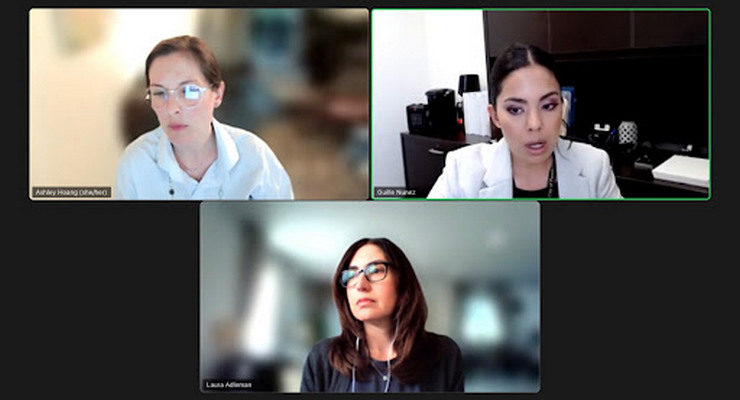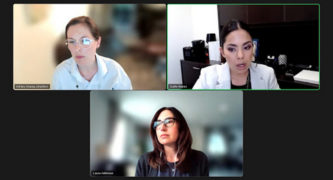
Permits, planning and parking held center stage Thursday as the City of Pasadena hosted an online webinar to familiarize residents and would-be Accessory Dwelling Unit (ADU) builders on the updating of the City’s current permitting process and ordinances.
Recently awarded a personnel grant by the Southern California Association of Governments (SCAG) the city hired the infrastructure consulting firm, Aecom.com, to help update its ADU policy.
Aecom Senior Outreach Engagement Specialist Laura Adleman moderated the meeting, with colleague Ashley Hoang and City of Pasadena Management Analyst Guille Nuñez answering questions from the participants.
 “The main goal of this project,” said Hoang, “is to further remove barriers to ADU production at the local level, and develop tools so that other cities can reference those and do the same in their communities in the future.”
“The main goal of this project,” said Hoang, “is to further remove barriers to ADU production at the local level, and develop tools so that other cities can reference those and do the same in their communities in the future.”
According to Hoang, the team has been working to help update Pasadena’s ADU policies since fall of 2021 and has been completing technical work this past spring. Public workshops and study sessions will run through summer with the final project due to be completed in the fall of 2022.
Presenting an overview of ADU policies statewide, Hoang looked at areas where cities can implement their own regulations.
 Cities can apply their own objective design and development standards, she said, so that any ADU meeting those standards would be required to be processed ministerially, without any discretionary review.
Cities can apply their own objective design and development standards, she said, so that any ADU meeting those standards would be required to be processed ministerially, without any discretionary review.
City staff or a design board or planning commissions would not have a discretionary review if an ADU met those objective standards, noted Hoang, who said that cities can further establish minimum and maximum unit sizes with limitations.
The new standard would not apply to conversion projects, but cities can be “flexible” when citing parking for ADUs, and apply objective design and development standards.
 “State law just means that there can be no personal or subjective judgment applied and the standards really need to be uniformly verifiable,” Hoang explained.
“State law just means that there can be no personal or subjective judgment applied and the standards really need to be uniformly verifiable,” Hoang explained.
Hoang also pointed out that in Pasadena, ADUs can be rented, but currently not sold separately, and are allowed where residential uses are zoned. While there are some size limitations, ADUs are allowed to be at least 850 square feet with detached ADUs being limited to 1200 square feet,
There are limitations to parking requirements, Hoang also pointed out, noting that there can not be more than one space per unit or bedroom, whichever is less.
Pasadena is planning to update its ADU ordinance to ensure compliance with state law by the end of this year, said Hoang.
 The City currently has ADU regulations for single-family and multi-family ADUs, as well as ADUs in historic districts, and individually designated historic properties. There are also junior ADUs which may share a bathroom with an existing dwelling.
The City currently has ADU regulations for single-family and multi-family ADUs, as well as ADUs in historic districts, and individually designated historic properties. There are also junior ADUs which may share a bathroom with an existing dwelling.
Hoang explained that the city distributed two surveys in February and March of this year to “help understand how best to support ADU development and improve the city’s process.”
The first survey was designed to gauge the public’s interest in ADU development, and then an experience survey was distributed, designed to understand the experiences of community members, architects, designers, and developers who have built or plan to build ADUs.
Survey questions included:
- “What was the timeline to build the ADU or the cost for design permitting and construction?”
- “Was rental income expected and was it generated?”
- “What were the financing sources used?
Hoang said that the survey showed “almost a unanimous interest” in ADU development, to either house a family member or acquaintance and also to generate supplemental rental income next.
But the majority of experienced survey participants saw longer than expected construction times, and occasional difficulties in locating the right city staff, she noted.
“Some of the biggest barriers experienced, and perceived by the public, were a lack of clarity in the permitting process and timeline,” said Hoang. However, she added that nearly all participants would still recommend building an ADU to a friend.
Hoang also pointed, in response to a number of questions, that the average permitting processing time for a new ADU is four months, “when the application is code-compliant.”
Non-code-compliant applications, she said, will take longer depending on the architects and contractors and the nature of any revision.
Most of the questions following the presentation were centered around property taxes, the permitting process, and parking.
Nuñez pointed out that while there are city impact fees for ADUs over 750 square feet, those can be reduced when the unit is built specifically for a family member. She also explained that any property taxes are a matter for the LA County tax assessor and not the City of Pasadena.
Aecom plans to complete their work this fall with policy recommendations for the City Council, as well as a handbook for homeowners, builders and contractors.
The next ADU workshop will be held in August.
More information on ADUs as well as future ADU events, is available at www.cityofpasadena.net/adu.














 4 comments
4 comments


